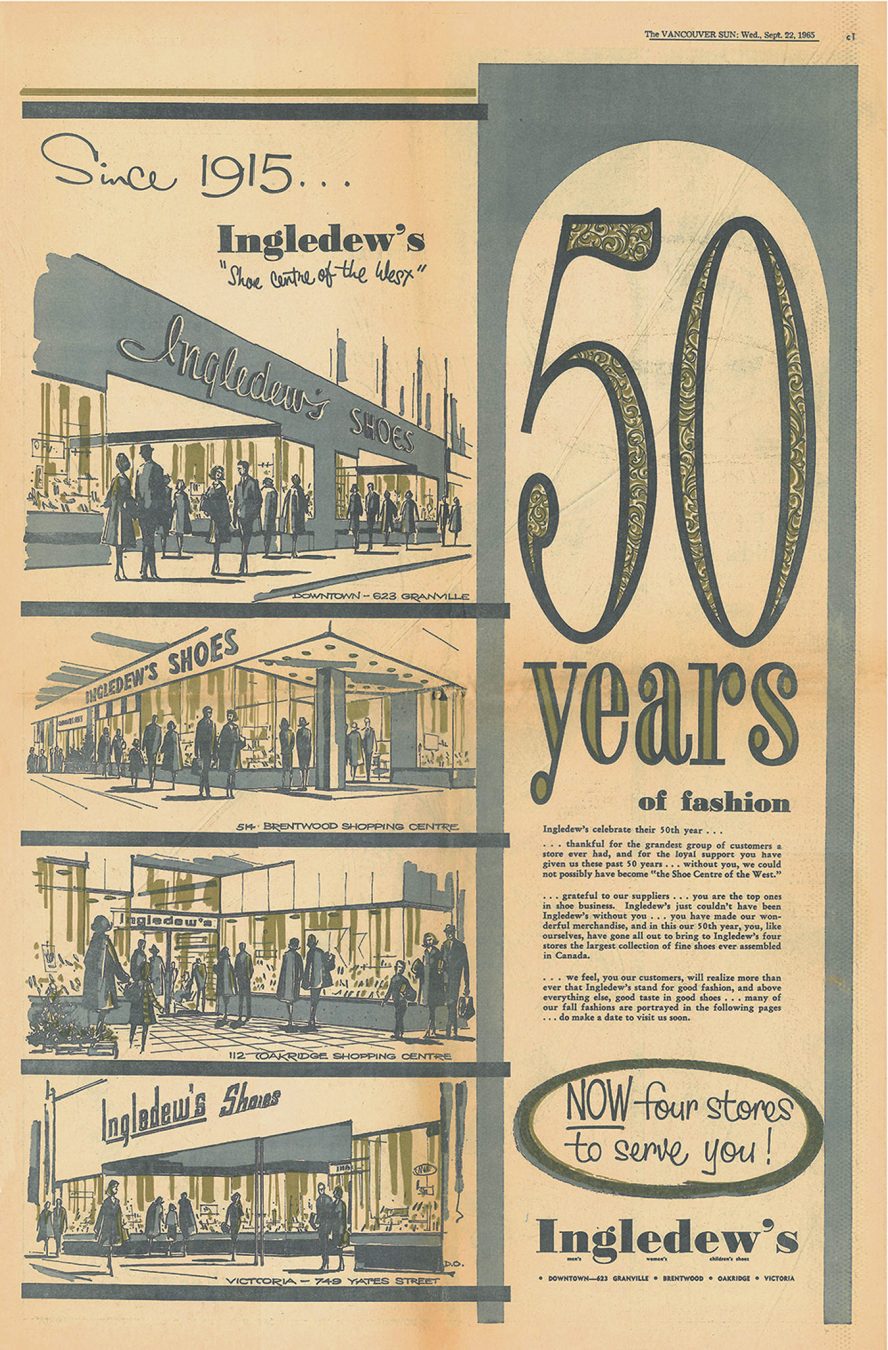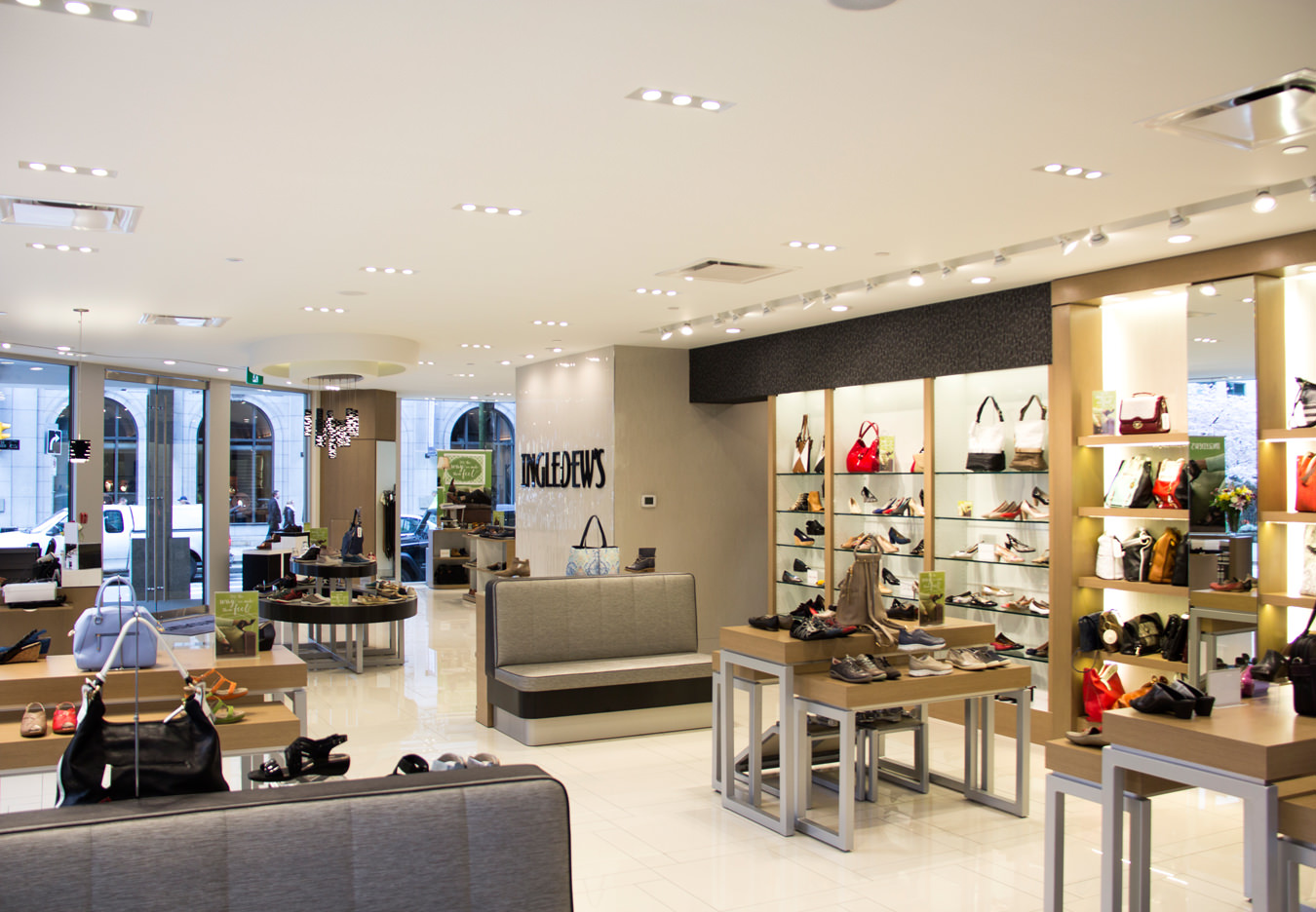In an era of online shopping and fast fashion, a 100-year-old, family-owned luxury shoe store is undoubtedly a rare species. “My father told me, from the day I was born, never to go into the shoe business,” says Bill Ingledew, CEO of Ingledew’s Shoes, the Vancouver-founded company that now spans four generations. “But here I am,” he laughs. Bill’s grandfather, William Wright Ingledew, opened the first store on Granville Street in 1915. Since then, the company has survived two world wars, several economic downturns, and four major moves. Despite his father’s advice, Bill started working at Ingledew’s while he was still in high school, polishing toecaps on shoes in window displays. Since officially joining the company in 1971, his passion for well-made, well-fitting, classic footwear has only grown.
High-quality shoes that fit well and look nice without sacrificing comfort have been the platform of Ingledew’s since opening, when the luxury shoe industry looked a lot different than now. “In 1915, Gastown was a field. There were wooden sidewalks and wooden houses,” recounts Bill, adding that his uncle used to play with the cows in the pasture beside his grandfather’s house, where the Four Seasons now stands. At the time, most people only owned one or two pairs of shoes. There were only a couple of shoe stores in Vancouver, and Ingledew’s was one of the first to offer the kind of wide selection seen today. With the economic success of the Roaring Twenties, Vancouverites were able to afford more, and the evolution of footwear design skyrocketed globally. “The technology of making shoes has been completely transformed over the last 100 years … The shoes we see today didn’t exist in 1915, or even in 1950,” says Bill. Men’s shoes, for example, were not fashionably diverse until relatively recently. Before the ‘60s, they were all made the same way: leather soles stitched onto leather uppers on a last. Now, men have almost as many styles to choose from as women.
In the 1960s, the shoe industry saw a dramatic shift in design with the advent of lightweight athletic footwear. Soon enough, shoe designers were applying the principles of sport footwear design to other types—including boots and dress shoes—and as such, a more casual trend evolved. Ingledew’s was quick to jump on the stylish comfort train; it was the first Canadian shoe retailer to carry Rockport, an Oregon-based brand known for comfort and functionality. Since the ‘70s, Bill says, Ingledew’s has focused on providing shoes that are stylish, but that also work for the lifestyle of most Vancouverites—ones that can withstand the rain and be worn with a pair of jeans. In the late 1970s, it became clear that shoe manufacturing in Canada was not going to survive and that stores needed international sources for products. Ingledew’s had already been dealing with factories in Italy and Spain for years through an agent in New York, but put an emphasis on direct European imports in the 1980s. Bill made his first trip to Europe to buy shoes in 1986.
Though the shoe business has changed drastically since 1915 and Ingledew’s has largely adapted at every turn, the company retains one vital tradition from a century ago: providing customers with the perfect fit. “If your shoes don’t fit properly, they hurt your feet,” says Bill. “And if your feet hurt, it affects everything you do.” Unlike many outlets, which stock five or six European sizes per style, Ingledew’s offers its customers up to 100 options.
The “Art of Fit” distinguishes Ingledew’s from its cheaper, more modern competitors. Though the company is building an online store that will launch later this year, Bill still believes in the value of physical establishments. In fact, as part of its centennial celebration in March, Ingledew’s opened a new flagship at 900 West Hastings, the former home of Chanel. It is the first time in the company’s history that its store is not located on Granville Street. With 100 years behind it, Ingledew’s confirms that while the definition of luxury may change, the demand for luxury will not. That is, if the shoe fits.












